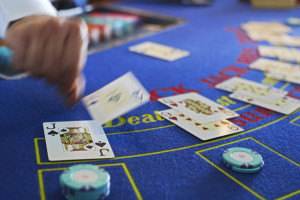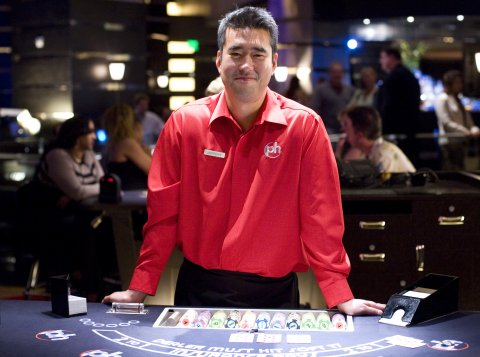
From Blackjack to Big Data – The Importance of Avoiding Cognitive Bias

One of the most entertaining speakers at yesterday’s CAO Summit was Jeff Ma, a group product manager at Twitter. Before joining Twitter, Ma was a successful blackjack player, and was the inspiration for the book “Bringing Down the House,” which chronicled how he and several other MIT students combined statistical theory and card counting to win millions at Las Vegas casinos.
During a keynote address at the International Institute of Analytics’ event yesterday, Ma related some fascinating stories about gambling in Vegas casinos, the drink preference of NBA players, and hanging out with Hollywood stars. But at the end of the day, he had important advice in the field of analytics.
To Ma, what he did over 20 years ago wasn’t gambling. “Everything we do is subject to math, probability, numbers,” he said. “Every decision we make is objective. It’s all data-driven. I like to think that blackjack was big data before big data was even a term. There’s a ton of trials and simulations you can do. Everything is governed perfectly like a little petri dish of objective, data-driven decisions.”
Ma and his friends ultimately succeeded, but it wasn’t always easy. Even if he played perfectly and didn’t deviate from basic blackjack theory (which statistics say will cause him to lose just 50 cents for every $100 bets – the advantage comes from counting cards in the four-deck stack and sensing when he had an advantage) that didn’t protect him from losing streaks.
Ma recalled how he questioned his analytic methods after losing $50,000 during one brutal stretch, where he had three hands with 19, while the dealer was showing a 6. The dealer drew a 5, then a face card to hit a blackjack.
“The idea of being 21 and losing $50,000 in the better part of 2 minutes, and actually sticking with your strategy and having the guts to put another $30,000 [on the table] — that was a crises of faith moment.” The lesson for analytic practitioners is to separate the right decision from the outcome.

Jeff Ma in his cameo role as a dealer in the movie “21,” which was based on the book “Bringing Down the House.”
Ma had good advice for avoiding other cognitive biases that creep into our actions when we follow our guts instead of our brains, including the dangers of “group think” and loss aversion, which is the tendency to favor inactivity over activity. “We’d rather have a mistake made by omission than actually feel like we’re making a mistake,” he said. “We’re all afraid of losing. [But] we can’t be that way if we want to innovate.”
Ma and his friends invested in Apple when it was trading at $60. A year later, when it was trading at $120, and his friends encouraged him to sell. Their reason? “We made 100 percent return in less than a year. Don’t be a moron. Don’t be greedy,” they told him. But that was the wrong approach to the problem, he said. The right way to look at the problem was to ask whether Apple was a buy or a sell at $120, or whether there were better prospects.
Making a decision based on a short-term time-table is another mistake, he said. After losing $50,000 in two seconds, Ma admits he was crushed. But thinking about the long-term ultimately led him to go back down to the tables, recoup his winnings, and finish the weekend up $70,000.
“When you make decision based on a short timeframe, you’re probably going to make bad decision,” he said. “In that short time-frame, one hand vs. my entire career playing blackjack was not a good way to think about it. I had done very well in black jack up until then, I need to keep playing.”
At the end of the day, sticking with data-driven decision making is the right approach, but it’s not always going to be easy. “If you’re going to make an unpopular decision from time to time, you have to be brave enough to make them and willing to make them,” he said.


























